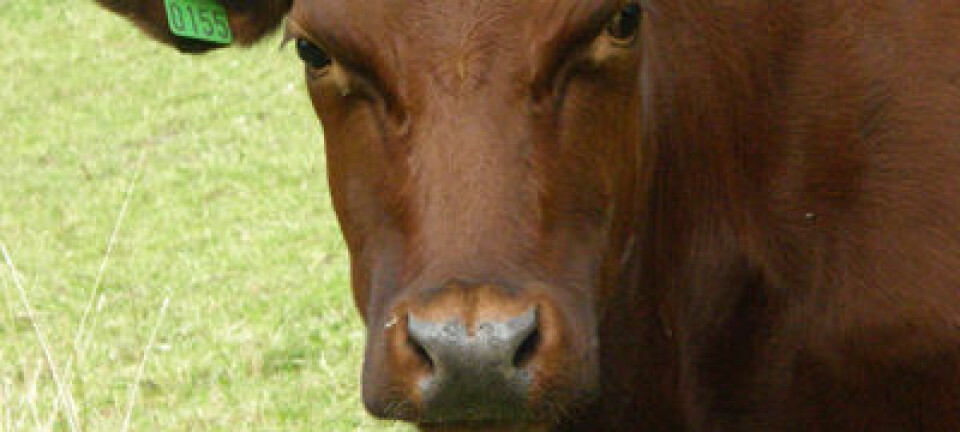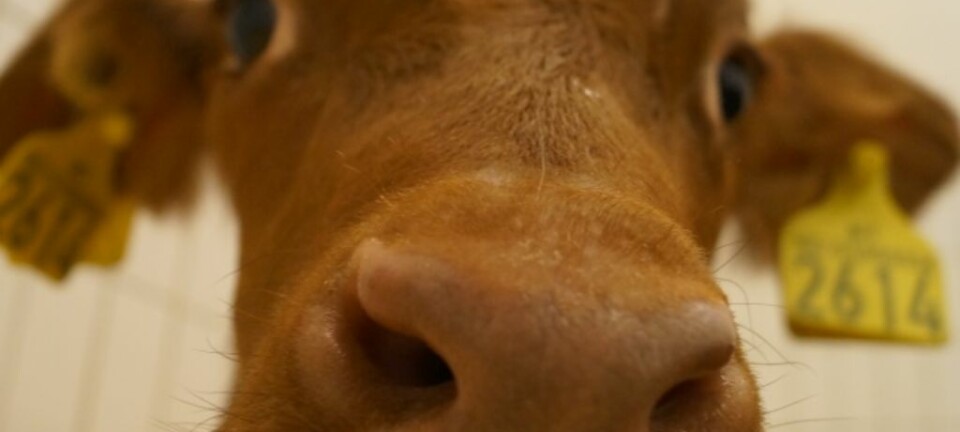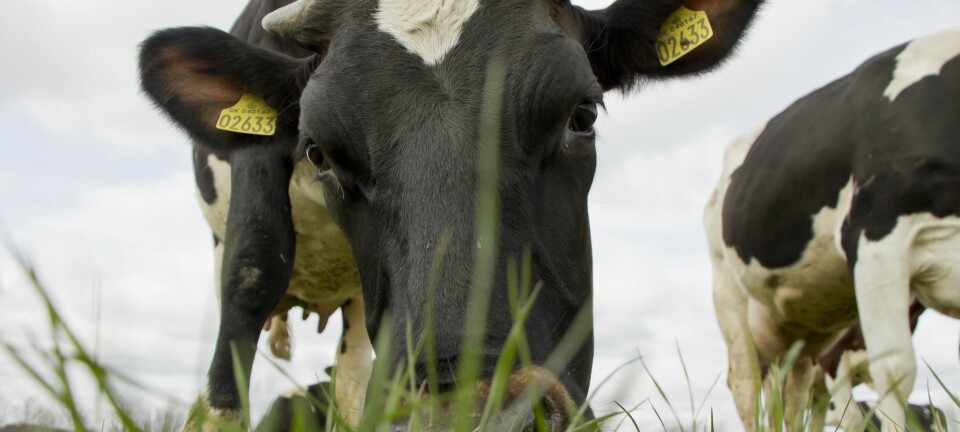An article from Norwegian University of Life Sciences (NMBU)
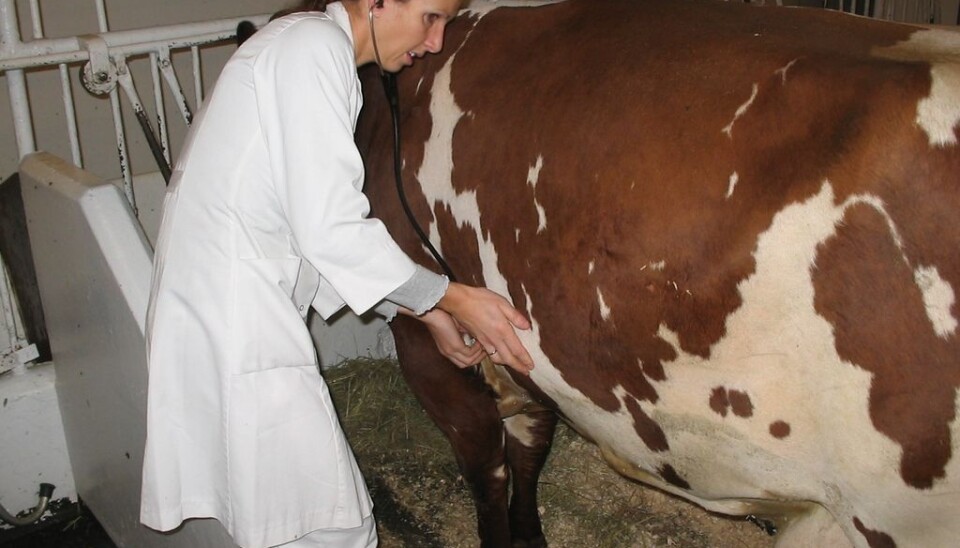
More and more cows are catching colds
Respiratory infections in cattle pose a large and growing problem in Norway, resulting in impaired animal welfare and the increasing use of antibiotics. Simple measure to prevent infection can put a stop to the cold virus.
Denne artikkelen er over ti år gammel og kan inneholde utdatert informasjon.
Increasing numbers of cows and bulls are starting to cough and have breathing difficulties. As Thea Blystad Klem's doctoral research has demonstrated, the main cause is the infectious Bovine respiratory syncytial virus (BRSV). She has also proved that once animals have been infected by this virus, it can lead to long-term, negative consequences.
BRSV is the equivalent of the human RS virus, which causes colds in humans and can lead to serious infections in small children. In the majority of the herds affected by outbreaks of respiratory disorders and examined as part of Klem's study, BRSV was found to be the only virus present, and infections caused by other viruses were not involved.
“It is therefore probable that the number of outbreaks of respiratory disorders in Norwegian cattle herds will fall substantially if we manage to control this virus,” says Klem.
Colds result in long-term repercussions
During one outbreak of respiratory infection at a testing station for bull calves run by Geno, a farmer cooperative and breeding organization for Norwegian Red (NRF), most of the stabled 265 calves had respiratory symptoms. One out of five animals became so ill that they had to be treated and the mortality rate was relatively high. BRSV was the main cause of the outbreak. The calves that fell seriously ill and received treatment did not grow as much as those that were not treated, and the difference between these two groups was evident for at least eight months after the outbreak.
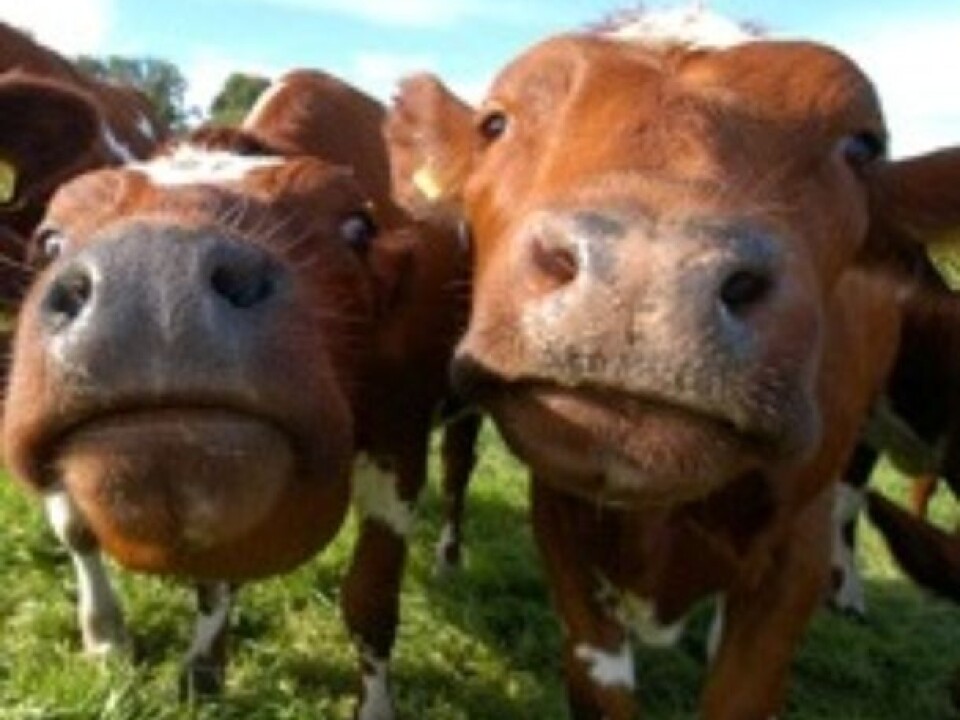
Furthermore, the calves that showed no symptoms, but were housed in the same barn during the outbreak, were shown to have a poorer growth rate and benefited less from feed concentrates compared to animals in a control group.
Both cows and bulls eat badly and utilize what they eat less efficiently, with the result that the cows produce less milk and animals produced for meat grow at a slower rate. This in turn has negative consequences on the farmer's profits.
“This would indicate that a BRSV infection has a negative impact on the performance of apparently healthy and recovered animals and this has repercussions for both animal health and farming economy,” Klem points out.
Over 50 percent are infected nationally
Klem's study demonstrated that a total of 54 percent of cattle herds in Norway showed signs of BRSV infection during the last year. This was revealed by measuring antibodies against the virus on two occasions at an interval of six months. A total of 134 herds were included in the study. A herd was classified as infected if at least one of the animals tested was shown to have antibodies against BRSV.
The herds that tested positive had therefore most probably been infected during the course of the last year.
But the incidence of herds that tested positive for the virus varied from region to region. Several non-infected herds were located in close proximity to infected herds, but a number of the former managed to avoid infection in spite of several newly infected herds in their area.
“This indicates that it is possible to prevent a herd becoming infected, even in areas where there is a high prevalence of the virus,” says Klem.
There was no significant difference between large and small herds as far as new virus infections were concerned. The likelihood of contracting a new infection by BRSV was equally high during the summer and winter, but Klem detected a larger number of animals with antibodies against BRSV in herds that contracted the infection during the winter.
Identification recommended
Klem also investigated the incidence of newly infected herds and the spread of infection between herds.
During the 6 months between taking the two sets of antibody tests, 33 percent of the non-infected herds from the first set became infected. 42 percent of the infected herds became free of the virus.
“It appears that the virus does not remain in the infected herds for long and many infected herds get rid of the virus without implementing any measures. A good strategy for reducing the incidence of this disorder would therefore be to identify herds that test negative and prevent them from becoming reinfected,” states Klem.
Tank milk studies in surveillance work
Investigating antibodies in tank milk has proved to be a useful tool in the systematic surveillance of infectious diseases in dairy herds.
Klem therefore studied tank milk from 89 dairy herds in order to detect antibodies against BRSV and to appraise the benefit of such studies when monitoring infected and non-infected herds. Her results show that tank milk can contain antibodies against BRSV at least four years after the time of infection, even if the herd has not been reinfected.
Since the antibodies have such a long lifetime, a positive tank milk sample can be due to anything from a herd recently infected by BRSV to a herd that was infected as long as four years ago.
“It is important to take this into account when using tank milk surveys as a diagnostic tool for BRSV infections,” explains Klem.
Klem believes that in some cases, it is a good idea to conduct additional tests of for example blood or milk samples from individual animals in a herd whose tank milk has tested positive in order to find out whether they have been recently infected by the virus.
“The results of my work indicate that preventive measures against BRSV infection in cattle herds will reduce the occurrence of respiratory disorders in these animals. However, studies of such measures were not part of my research project,” Klem says.
But the usual ways of preventing infection include good hygiene, using overshoes when entering barns, putting infected and non-infected animals in separate pastures and the like.
Reference:
Blystad, Thea: Bovine respiratory syncytial virus infection in Norwegian cattle, PhD thesis, the School of Veterinary Science at the Norwegian University of Life Sciences, June 2014.
------------
Read the Norwegian version of this article at forskning.no









